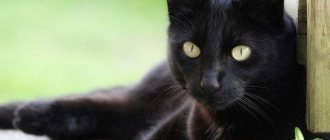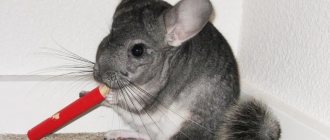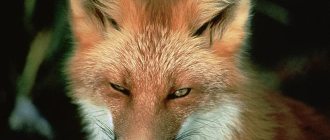What kind of pets do lovers of exotic animals keep at home? And spiders, and scorpions, and chameleons, and raccoons... Recently, country houses and city apartments have begun to gradually become inhabited by such unusual animals for domestic conditions as foxes. These are usually small desert fennec foxes and common (red) foxes. But before you decide to purchase such an exotic animal, it would be nice to learn about the peculiarities of its maintenance and the dangers that may lie in wait for both the domestic fox and the owner.
Is it possible to tame foxes?
Not really. Often, foxes that people keep as pets are taken from their mothers at a very early age to aid the teething process. This may lead to behavioral problems in the future. Foxes are quite destructive and curious by nature, they chew everything and dig everywhere.
Walking the fox
They also leave their marks everywhere. It really is a very pungent and persistent smell, and traces of urine practically cannot be washed off. They also have scent glands between their toe pads, so you'll end up with a very smelly house.
Maintenance and care
You should prepare for the appearance of a domestic fox in your apartment like you would for the arrival of a noisy, clumsy and playful child. This means that it is necessary to remove from its access area everything that could pose a danger and threat to life, as well as valuable and dear things to your home.
The fox should have its own place - a cage with a den and a toilet, where it should be locked during the absence of its owners, so as not to return to a ruined apartment.
The animal will also need:
- bowls (for food and water);
- toilet filler/diaper;
- bedding - hay;
- sand (for fennec);
- leash and harness for walking.
It is important to periodically walk your domestic fox; for this you can use harnesses or leashes and dog collars
In a private house it is easier to create conditions for maintenance. Red and silver foxes can live outside all year round - in an enclosure with a booth. Experts also advise making a small elevation in it in a sunny place - a kind of solarium for foxes.
Sunlight must penetrate into the enclosure
Fennec foxes are African foxes and cannot live in the cold. Therefore, keeping them outside in the Russian winter is not suitable for them.
Domestic foxes have inherited sharp claws from their wild ancestors that need to be trimmed periodically. This procedure is carried out using a muzzle, which the fox has been accustomed to since childhood.
The fox does not need to be combed, with the exception of the molting period, which occurs at the beginning of spring and lasts 3-4 weeks. Combed wool will not only reduce the duration of shedding by a quarter, but is also valuable for craftsmen and artists who create various crafts and woolen items.
There is no need to wash the fox. She takes care of her skin on her own, licking it like a cat. Frequent bathing can dry out the skin and cause dermatitis. Only fox cubs that are not clean are washed, no more than 2 times a month. Moreover, water is used at room temperature.
If a snowy or marbled fox begins to darken, then the conditions of detention and diet should be reconsidered.
What to feed
As with any domestic animal, the diet of a domestic fox should be balanced
Foxes have a reputation as omnivores. And this is partly true, with the exception of some details.
The following foods should not be given to domestic foxes for the following reasons:
- Broccoli is toxic to animals.
- Yeast dough causes fermentation in the intestines and increased gas formation.
- Potatoes and peppers provoke diarrhea.
- Tubular bones (raw, cooked) can damage the esophagus and cause enteritis.
- Milk and dairy products cause diarrhea. Give only for constipation and poisoning.
- Sweets cause obesity, tooth decay, and diabetes.
- Plums and peaches are toxic to animals. Suitable in minimal doses.
- Persimmon causes intestinal obstruction and enteritis.
- Citrus fruits can cause vomiting and an allergic reaction.
- Onions and garlic contribute to the development of anemia.
- Chocolate, coffee, tea. Caffeine provokes diarrhea, vomiting, and is toxic to the heart and nervous system.
- Pork is too fatty.
- Sausage contains preservatives and spices.
- Bread is often an allergen for the canine family.
The ideal diet is that of a predator in the wild. For example, fennec cats in natural conditions feed on bird eggs, catch small reptiles and insects, and adore locusts. They also do not disdain plant roots and tree fruits. They get all the moisture they need from food and can go without water for a long time.
When kept at home, fennec cats are fed fruits (figs, dates), vegetables, and raw meat. Domestic foxes - minced meat, boiled fish, raw eggs, low-fat cottage cheese (once a week), vegetables (carrots, zucchini) and fruits (grapes, pear).
Fenechs love to eat fruit, but don’t forget to give them other food as well.
You need to immediately decide on the type of food: natural or ready-made. Dog food of at least premium class is suitable for feeding foxes. The category is selected based on the size of the animal. For ordinary domestic foxes, food is suitable for medium breeds of dogs, for fennec foxes - for small, decorative ones.
Diseases and treatment
Like any pet, a fox needs care and attention. The state of health directly depends on the quality of its maintenance and diet. The animal must be regularly shown to the veterinarian and promptly vaccinated, especially against rabies.
Pets need antiparasitic treatments and protection from piroplasmosis, transmitted through a tick bite.
Any change in the pet's behavior and appearance - loss of appetite, lethargy, apathy, dull fur, dry, warm nose, watery eyes, frequent sneezing - should be a signal to contact a veterinarian. This may be a sign of a dangerous disease: plague, rabies, parovirus enteritis, infectious hepatitis, salmonellosis, streptococcal infection, leptospirosis, ringworm, toxoplasmosis, piroplasmosis and a number of others.
Conditions of detention
A domestic fox must have a separate bowl for food and water.
To keep a domestic fox you need a cage or enclosure.
A good fox cage should have 4 qualities:
- Be spacious.
- Durable so that the animal cannot make an unauthorized escape.
- With a secluded lair.
- With a toilet - a cat litter box or a box with sand.
In the apartment, the foxes are often given a balcony. This is a good option for an ordinary fox, which is hot in the apartment in the summer, but is not suitable for a fennec fox, which needs a warm (at least +20 degrees), dry room all year round.
Before moving the fox onto the balcony, it needs to be prepared.
A good balcony for keeping a fox should be glazed and have:
- Tiled floor.
- A booth-hole.
- No sharp or fragile objects.
- Strong wire mesh on the window frame for ventilation. Heat is destructive for a fox.
The best conditions for a fennec cat are a separate room or part of a room with an equipped partition. Fenech loves to bury itself in the sand. He does this with phenomenal speed. It is advisable to provide him with this bulk material so that he can realize his natural instinct.
The long-eared fox has a very sensitive hearing - the noises of the big city disturb her, so she needs to choose a place away from the central streets and passageways.
Fenechs are also night hunters. They become active at dusk. The noise they make will disturb the sleep of other residents of the apartment.
Fenechs are extremely jumpy. Everything that is at a meter height is within their access zone.
In autumn and winter, fennec foxes are not walked and protected from drafts.
The best conditions are outdoor cage keeping.
Hay is an ideal bedding for a domestic fox kept in an enclosure.
An outdoor enclosure must have not only walls, but also a roof and floor (foundation). Such precautions are necessary to prevent the escape of a cunning pet prone to digging (the walls of the enclosure are buried 1m 20 cm) and jumping in height.
The enclosure is equipped with:
- container with sand for digging;
- shelves and elevations for climbing;
- a den-kennel for privacy;
- tray with sand for the toilet;
- bowls of food and water.
It is organized in a secluded place, away from neighbors, so that the fox’s night songs do not disturb anyone.
When keeping a fox outdoors, you need to pay attention - spend at least 4 hours with it every day, walk it. If this is not done, the connection with the animal will be lost and it will go wild.
Breeding at home
In captivity, foxes reproduce poorly. And breeding them without the necessary skills and knowledge is not a very reasonable decision. Usually this is done by professional fox breeders and on order, so as not to create problems with the further sale of fox cubs.
For pet keeping, animals are castrated. This helps reduce the specific unpleasant odor and aggressiveness that worsens during the rut/estrus. The castration procedure is carried out at 6–9 months of age, when puberty begins.
How long do domestic foxes live?
In captivity, they live 15–20 years, provided they are properly maintained and fed. Fenechs - 10–13 years.
What do foxes eat?
They are omnivores, which means they will need a lot of meat in the form of small rodents - rabbits, mice, chickens and the like. So the fox owner needs to find an opportunity to receive them every day. But the chanterelle's nutritional needs don't end there.
Fox in the house
They also need stimulation to find food as they are natural hunters. In zoos, keepers hide food for them, bury it or put it inside objects so that the foxes get food from the inside. This is not the same situation as with your cat when you leave her some Whiskas in the morning and go to work.
Character and education
If a fox is constantly treated kindly, it will become more tame.
As with any pet, you need to speak the language of love with a fox. Initially, there is no need to have illusions and draw analogies with dog devotion. You will have to be patient, especially during the first year of your pet’s life. If you follow the chosen course and establish contact with the animal, you can get a smart, funny friend who reciprocates warmth and care.
Raising a fox cub begins from the first days it appears in the house.
The fox is a night hunter. In the wild, its activity occurs in the dark, which is not suitable for home living. You can transfer the fox cub to daytime mode in the following way: you need to provide him with activities and tire him to such an extent that at night he sleeps “without his hind legs.” As a rule, this is achieved through games and attention. It is necessary to provide the pet with a sufficient set of toys so that it does not feel sad or bored in the absence of its owners.
The animal must know the command “Fu!” Training is carried out using the “carrot and no carrot” method, that is, you can give a treat for a completed command and not give it if the pet does not obey.
Fox breeders advise using only non-contact punishment methods. Physical pressure is not applicable to the fox - it will move away and contact will be lost, perhaps forever.
The fox has a very good memory and is smart. It is enough to lock your pet in a cage or skip one feeding for an offense. The lesson will be learned! You can clap your hands and shout if the cheat is caught committing a crime, but it is useless to do this when the pillow was “eaten” 20 minutes ago. Lisa won't understand anything. In general, the best way to protect your property from the pranks of the red beast is to remove valuables from the animal’s field of view and access and give it good physical exercise every day so that there is no energy left for mischief.
Features of behavior
Foxes are very energetic, so they need to be walked and constantly played with.
Many of the habits of foxes are similar to those of dogs. For example, they also wag their tail when they are happy and in the mood to play. They press their ears back when they are afraid and put their belly up as a sign of reconciliation and complete trust. Like dogs, they do not like to be alone and enjoy attention and company. Foxes are also susceptible to learning. They can easily be taught a number of commands and walking on a leash, especially if you already have experience in dog training.
There is a lot in their character from cats. They also love to play in boxes and are easily litter trained. Foxes also love to be petted. And they themselves choose the time and place for this. In their independence and individualism, foxes are more cat than dog.
How to tame a pet fox
Speak her language
To tame a fox, it is important to learn to understand its sounds and body language. They will tell you what mood the animal is in and how it feels.
For example, the drawn-out “oo-ru-ru” is the call of a fox cub missing its mother. The first days in someone else's house he makes this exact sound. Whining combined with a wagging tail means joy. But if the animal huddles in a corner, whining, this is a completely different emotion, meaning “Don’t touch me!”
A fox makes a sharp sound, similar to a cough, when it is about to bite, defending itself from an offender or protecting its property.
Use her habits
Considering that foxes are very smart, cunning and curious, you can play on these qualities to achieve your goal. For example, try to outsmart the prankster. If she stole a sock, do not try to take it away by force, but offer a “fair exchange” - give a toy, diverting the pet’s attention from the sock.
Be patient
Don't expect immediate results from your efforts. Be prepared for the fact that taming a fox is a long and labor-intensive process and not always successful. For example, only 60% of foxes can be tamed to the tray. And those, from time to time, relieve themselves in the wrong place.
Fenech: interesting facts
- The most famous fennec fox is the same fox from “The Little Prince” by Antoine de Saint-Exupéry. It is he who owns the phrases “You are responsible for those you have tamed” and “Only the heart is vigilant - you cannot see the most important thing with your eyes.”
- In Algeria, the fennec fox is revered, where the fennec fox is the national animal. Even the football team of this country is called “Fennecs”. In addition, the image of a fennec fox adorns the Algerian ¼ dinar coin.
- The fennec fox also symbolizes the ecology of Tunisia, and in every city you will find an image of a fennec fox dressed in blue and white.
- Fennec is the codename and logo of Firefox for mobile.
- The popularity of the fennec cat as a pet jumped sharply after the appearance of the cartoon Zootopia.
- Mentions of the fennec are found in the following works:
- Mine Reid "Young Hunters" (although there is no fennec fox in Kalhari).
- Henri Troyat "The Crash" and "City of Lions".
- Antoine de Saint-Exupéry "Planet of Men".
- Felix Krivin "Fennec Fox".
- Sergey Lukyanenko “Transparent stained glass windows”.
- Frank Herbert "Dune".
In the photo: fennec
Interesting Facts
- During his expedition, Uwe George fell in love with the charming fennec cat so much that he decided to take him with him to Hamburg. The fox, whom the reporter took in, lived in a separate room filled with stones and sand brought from the Sahara. Numerous jerboas lived under the surface layer of sand; from time to time they emerged from their shelters and began to jump - gracefully, like tiny kangaroos. The entrance to their burrows was small holes through which special tubes passed - heating channels. Although the fenech during the hunt used all his cunning to grab the jerboa: he hid, sat motionless for hours in ambush near the mink, pretending to be asleep or completely indifferent, he rarely managed to catch the jerboa. According to Uwe George, these scenes played out by the fennec were very similar to the ups and downs of the famous cartoon “Tom and Jerry”.
- The most famous domesticated fennec fox is the fox in Antoine de Saint-Exupéry's novel The Little Prince. Antoine de Saint-Exupery was inspired to create this character after meeting a fennec cat in the Sahara in 1935.
- The fennec is especially revered in Algeria, where it is the national animal. The Algerian national football team is nicknamed "Les Fennecs" (Fennecs or Desert Foxes). In addition, the fennec is depicted on the Algerian ¼ dinar coin.
- Fenech is a symbol of Tunisia's ecology. Figures of this animal in a blue and white suit are ubiquitous in almost every city in this country.
- Fennec is the logo and codename of Firefox for mobile.
Video
https://youtube.com/watch?v=2TrIFcR4IIU
Sources
- https://www.krasnouhie.ru/fenek-kak-zhivet-pustynnaya-lisichka-v-dikoj-prirode.htmlhttps://dela.biz/biznes-idei/294-lisa-fenek-razvedenie-i-prodazha. htmlhttps://www.stena.ee/blog/fenek-udivitelnaya-lisitsa-ili-domashnee-zhivotnoe-za-1000-evrohttps://ru.wikipedia.org/wiki/Fenech
Silver fox
Silver foxes are a domesticated variety of red foxes bred exclusively in Russia. This fox taming program reduced the urine odor of foxes and improved their overall temperament.
The silver fox, also called tame Siberian fox, tame arctic fox, vixen, domesticated fox and other names, is a true domesticated fox.
Also classified as Vulpes vulpes, it is a different colored species of red fox. Thanks to a selective breeding program in Russia, these foxes have some differences from red foxes and slight genetic differences. True domesticated silver fox is only available in Russia.
These foxes have a canine disposition and smell very little. Some dog behaviors produced by the silver fox were tail wagging when happy, barking and meowing, and ear flaccidity.
Caring for these foxes is no different from caring for other breeds of foxes. If you are looking for a fox that is easier to care for, you may want to consider the fennec fox or gray fox.
To be honest, I didn’t find any information about this fox at all, but I came across the FOX FAMILY FEST fox nursery. According to the information on their website, they are the only nursery in Russia that breeds foxes.
If you know this nursery, please write reviews in the comments, because I couldn’t find them on the Internet.
African fox
The African fox (Vulpes pallida) is native to the Sahara Desert. This species is another rarity in the exotic pet trade. If you can find one, they usually need to be imported and can cost over $4,000. African foxes are a low-smelling species, are easier to train than fennec foxes, and have a friendly disposition. They tend to vocalize and make loud, high-pitched squeals, much like fennec foxes.
How does a fennec fox hunt?
Although desert foxes live in families, they, like their relatives, prefer to hunt alone. During the hunt, the animal completely relies on its hearing, sight and smell. These same feelings serve the Fennec to warn of danger.
Our common fox, the arctic fox or arctic fox, the corsac fox of the steppes of Asia, the gray American fox, the broad-nosed fox of southern Africa - they all have almost the same habits. In most cases, fox hunting comes down to searching for prey by smell and then hiding it.
And the fennec cat’s acute hearing, vision and sense of smell allow him to hunt not only birds, animals, but even insects. His silent, creeping step allows him to catch the most distant, quietest sounds on the move. If some air vibration gets into his ears, they expand towards the noise
The desert fox pauses for a moment and then begins to approach even more cautiously in the direction of the noise. Her eyes pierce the thick darkness of the desert. From a distance she can see a sleeping sandgrouse (steppe pigeon), a lark or even a fat locust
He eats her too. True, with less pleasure than a bird or animal, but still he will not pass by if he hears its rustling. In the desert you have to put up with everything, there is a lot of sand, stones and heat, but not food and drink
From a distance she can see a sleeping hazel grouse (steppe pigeon), a lark or even a fat locust. He eats her too. True, with less pleasure than a bird or animal, but still he will not pass by if he hears its rustling. In the desert you have to put up with everything; there is a lot of sand, stones and heat, but not food and drink.
It is much easier for the fennec to deal with voles. They have only one salvation: to hide under the roots or crawl into burrows. But this does not save much from a persistent pursuer. The animal digs shallow holes, and a small vole ends up in its stomach.
Family life of fennec cats
Foxes are social animals and live in family groups of ten individuals in branched burrows. Clans typically consist of one married couple, their immature offspring, and sometimes several older children. It happens that several families live in one den.
Desert chanterelles breed once a year. Pregnancy lasts about two months, and in March-April, from two to six cubs are born. Newborns weigh only about 50 grams, their body is covered with light white down. While the female feeds the offspring, the male brings her food. Babies feed on mother's milk for two to three months, but starting from the fourth week of life they begin to slowly become accustomed to solid food. The older puppies become, the more fiercely they fight for a piece of food. Already at the end of summer, the young animals begin to hunt alone, and by nine months they become independent. Often young fennec cats stay with their parents and help raise new offspring.
Fenech's enemies
However, the fennec itself sometimes, during a hunt, becomes a victim of hyenas, caracals, and sometimes leopards, jackals and eagle owls. The animal has the only way to escape from all these predators: to bury itself in the sand, or even better, to climb into its own or someone else’s hole. Burrowing in the sand is common for many desert animals and lizards; The fennec also disappears in front of the eyes of the enemies pursuing him. But he does not always succeed in deceiving hyenas, jackals and people. Hyenas and jackals will not be deceived by their instincts, and they will dig up the animal. In the same way, it is not difficult for a person to rake out a layer of sand and remove the fennec. A much safer way to save the desert fox is in its burrows, where it is safe from all its enemies, with the possible exception of the terrible asp, a snake that terrifies not only animals, but also people.
Fenech practically does not react to changes in the environment and cannot adapt to other living spaces. Sand foxes do not harm humans, but they have always been actively hunted and continue to be hunted.











